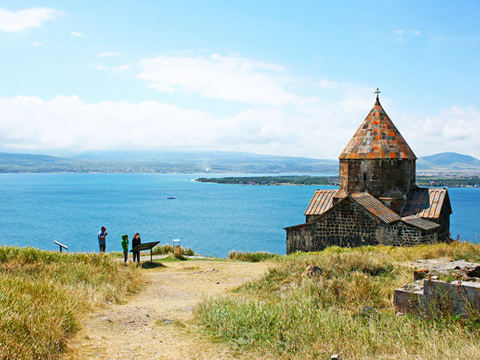Lake Sevan may disappear within 5-10 years

By Mushvig Mehdiyev
Sevan, the largest lake of the Caucasian region, is in an ecological danger.
Rivers running into the Lake Sevan with industrial wastes have largely contaminated the lake and the result can be even more disastrous.
The Ministry of Nature Protection has warned that the pollution is almost at climax and the lake will survive for only 5-10 years judging on current level of contamination.
Ecolur Informational NGO reports that the Masrik River
which runs through the Sot gold field in Armenia poured the
dirtiest ever water into the lake in July, 2014.
The Martuni River is the second river to bring the most
contaminated water to the Sevan Lake. Rivers such as Tsakkar,
Shohvak, Gavaraget are among other true "killers" of the endangered
lake.
Ecologist Silva Adamyan said contaminated water is greatly polluting the Lake Sevan and the trend will turn the lake into a large swamp within the next five years.
"The Lake Sevan is facing serious problems such as decrease of the water quality, poor-quality of draining water, and miscarried cleaning of the coasts," she underscored. "The government takes no measure to prevent the ecological terror."
Seyran Minasyan, a researcher at the National Academy of Sciences said the quality of water in the Lake Sevan is below by 50-60 percent comparing the recognized norm and it has sounded the alarms about the swamping future of the lake.
Ecologist Akop Sanasaryan blamed the incumbent government for the problems facing the Lake Sevan. He said that the authorities are either completely unaware of the issue, or implementing irrelevant projects.
"We will not have clean rivers soon, as they are being contaminated with heavy metals. The whole territory of Armenia will be polluted with the toxic substances due to the government's current policy," Minasyan added.
The Lake Sevan, originally called Gokcha Lake is located in the historical Azerbaijani land named Goycha. By putting the lake under danger, Armenia is committing an ecological crime against Azerbaijan. It is destroying not only the nature of Azerbaijan's historical lands, but also its occupied territories.
As a result of Armenia's military aggressions, 1.7 million hectares of Azerbaijan's territory have remained under occupation since early 1990s, where rare tree species are on the verge of destruction.
There are more than 460,000 species of wild trees and shrubs in the occupied territories, 70 of which are endemic.
In these areas, once there were also 24 protected species of fauna and 27 species of plants listed in the Red Book of the Republic of Azerbaijan.
Ecological terror in every corner of the world leaves undesirable traces on the nature in general. Any damage to the environment is a crime against humanity.
Here we are to serve you with news right now. It does not cost much, but worth your attention.
Choose to support open, independent, quality journalism and subscribe on a monthly basis.
By subscribing to our online newspaper, you can have full digital access to all news, analysis, and much more.
You can also follow AzerNEWS on Twitter @AzerNewsAz or Facebook @AzerNewsNewspaper
Thank you!
